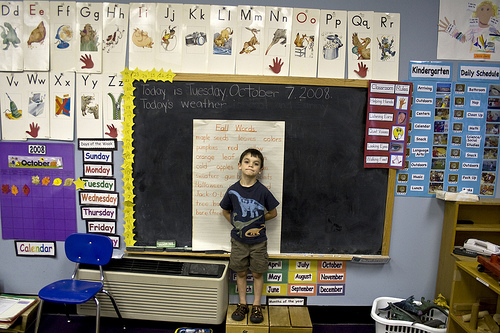By Ma. Rachel R. Yapchiongco
(first published in the Philippine Online Chronicles, January 23, 2012)
A preschool is a learning environment where young children’s minds can be properly nurtured and stimulated to prepare them for formal primary education.
In preschool, children begin to develop certain skills and behavior vital to the holistic development of their character, including:
- Personal, social, and emotional skills
- Communication skills (language, talking and listening)
- Cognitive skills (thinking, reasoning, comprehension, problem-solving and more)
- Physical development
- Creative and aesthetic development
Preschool is an important step in educating children because it is the foundation for early developmental learning. It helps prepare children meet the demands of formal education. Preschool programs help young kids become confident and independent learners as they embrace new knowledge, experience, discover and explore new things. The stimulating and nurturing environment provides a positive attitude for learning.
How to set up a preschool
Putting up a preschool requires capital, research, planning, development and implementation. Here are some important steps to take note of in putting up a preschool provided that you are financially capable and ready to set up one.
1. Decide type of facility.
The first thing to determine is the type of facility that the group wants to set up. A day care center and preschool are sometimes mistaken as one but they are different from one another.
A facility that caters to kids aged four years and below can be properly classified as a day care. A day care center is a safe place where parents can leave their kids while they go to work or do other things. Day care staff may not be teachers by profession. They provide the children child care while their parents are away. Children can enjoy free play under the guidance of day care coordinators. Day care centers are accredited by the Department of Social Welfare and Development (DSWD) and supervised by Local Government Units (LGU).
A preschool, on the other hand, is regulated and accredited by the Department of Education (DepEd). It follows stricter guidelines compared to day care center. A preschool is a preparatory stage before formal primary education for children aged three to six.
2. Determine the need in the area.
Location is an important factor in setting up a preschool. The area should be a safe environment, easily accessible to commuters and ideally close to residential areas.
If the group already has a good location in mind, the next step is to gather information to identify the childcare learning needs of that particular community. Find out if there are existing preschools in the area. It is quite risky to put up a new preschool near an already established one.
Parents will serve as the preschool’s partner in caring and teaching children during their early formative years. The group should create opportunities to discuss with parents. One way of doing this is by conducting a short survey to determine parents’ views and ideas about a new preschool in their area.
The group can also organize a forum on preschool learning and invite nearby residents. A good way to ensure attendance is by coordinating with several homeowners’ associations within the community. Providing free snacks or giving away souvenir items can help attract attendees.
Aside from a talk, the team can also organize fun activities for kids like storytelling, educational puppet show and arts and crafts. Some of the group members can go around and casually talk to parents while the kids are having fun.
3. Follow structure requirements.
The school site should have at least 500 square meters and located in a safe vicinity. The school should be at least 200 meters away from high risk places like rivers, garbage dump sites or main thoroughfares.
The building structure should be strong and secure. There should be proper fire exits and fire alarm system. Fire extinguishers should be provided accordingly. Classrooms should be spacious and have good ventilation. Classroom size should be 1 ½ square meters per child. There should be a playground, clinic, library, canteen and ample number of restrooms that are near the classrooms. All areas of the school should always be kept clean. The school itself should be used for educational purposes only and should not be converted into a residence after classes.
Secure a complete list of structure requirements and other accreditation guidelines from the Bureau of Elementary Education Division.
4. Get proper registration requirements and documents.
Putting up a business requires proper registration: Single proprietorship should be registered with the Department of Trade and Industry (DTI) while Partnership or Cooperation should be registered with the Securities and Exchange Commission (SEC). It is important to apply for a Business Permit from the city where you will put up the preschool. Register the business with the Bureau of Internal Revenue (BIR) to secure TIN (Tax Identification Number).
Photo from: www.flickr.com/photos/wwworks

